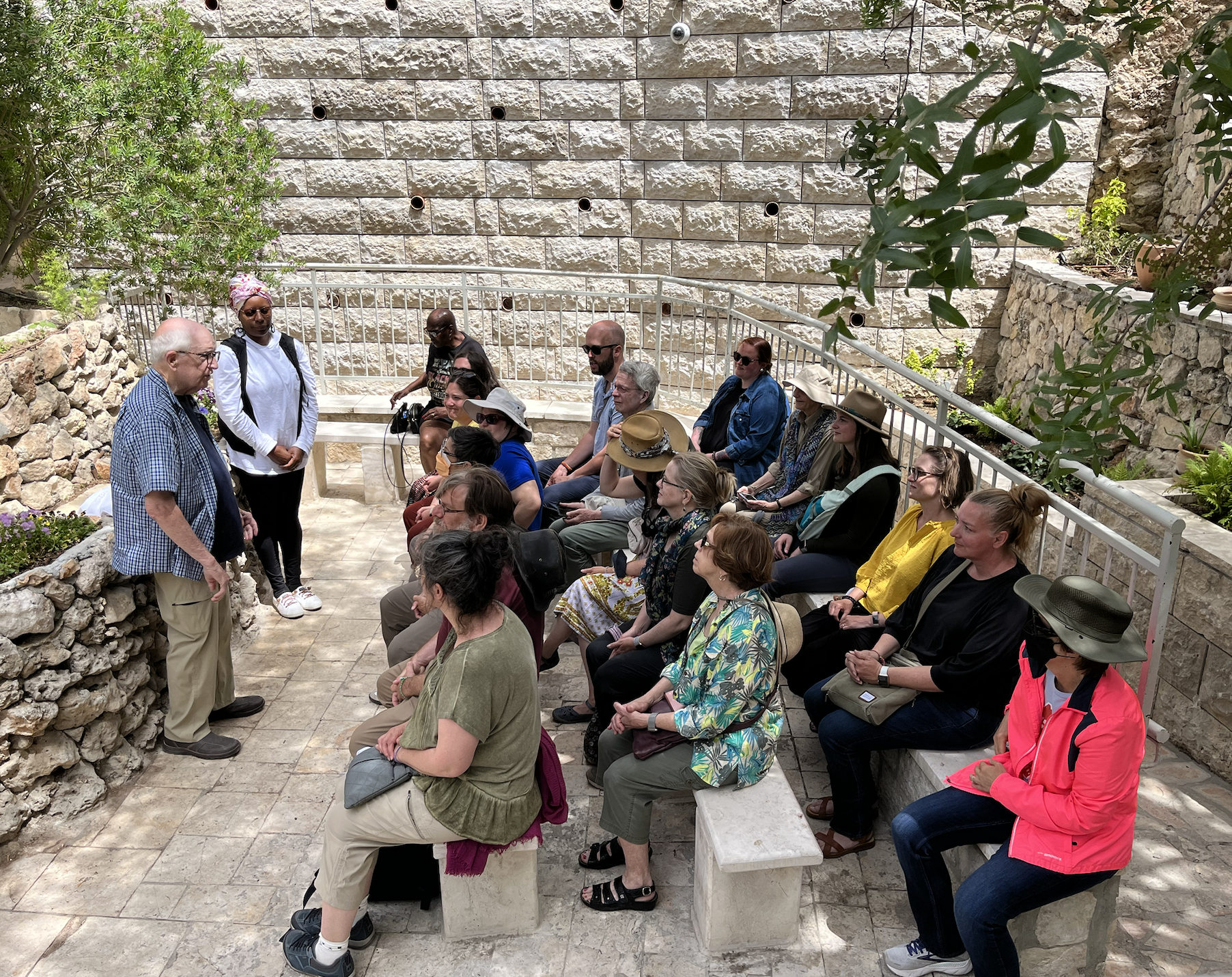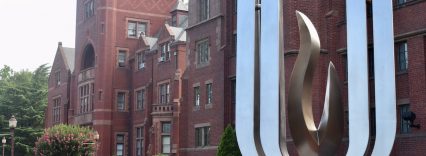Complex Narratives of the Land

For our final two days of the trip, we visited sites in Bethlehem and a few final stops in Jerusalem. On Thursday, we went to Bethlehem to visit the Church of the Nativity and the Shepherd’s Field. The site complex consists of several sacred spaces: the Church of the Nativity, Saint Katherine’s, and the Franciscan Monastery. Some of us waited for about an hour and a half to enter the grotto, the cave, where the tradition claims that Mary gave birth to Jesus. Unfortunately, the tight space that quickly filled with pilgrims coupled with the short window of time between services thwarted our entry. Despite disappointment, the experience prompted reflections among the group about the complex realities of pilgrimage and its meaning. Those who did not try to enter the cave, spent time in the courtyard where they could peek into the cave, where Jerome produced the Vulgate, the Latin translation of the Bible. From there, we went to explore one of the caves of the Shepherd’s Field, where the angels proclaimed the good news of the birth of Jesus to those who were on the fringes of society.
That we might not only experience ancient sites, but also encounter those living in the land today, we continued on to Dar Al-Kalima University. The group had the privilege to meet Dr. Mitri Raheb, a Palestinian theologian and president of the university. Rev. Raheb spoke about three interrelated topics: the realities of Christians in Palestine, the Palestinian-Israeli conflict, and the role of the university in Palestinian society. Despite the shrinking of their numbers, Christians have and continue to play an outsized role in variety of areas in Palestinian life. Through its emphasis on the arts and the culture, the university strives to strengthen the resilience of Palestinian communities. Their vision and mission sum up their commitments: in order for Palestinians to have life and have it abundantly, they educate “the next generations of creative leaders.” This encounter inspired group members to learn more about the dynamics that could make peace and justice for Jews and Palestinians feasible.
Our last day of the trip was emotionally and spiritually intense as we moved from the Garden Tomb to Yad Vashem, Israel’s Holocaust Museum. The group reflected on the hope that faith in the resurrection offers, even as the tradition assigns multiple locations for the place where Jesus was buried. As our time in the Garden came to a close, we celebrated communion, a reminder of how God’s table brings together people from different parts of the world. In stark contrast to the hope of that meal together, Yad Vashem depicted the horrors of the Holocaust. The terror and the oppression that the Jews of Europe experienced weighed heavily on our hearts. While a hard final encounter, our time at the Museum brought into sharper focus the continued political complexity of and layers of trauma embedded in the places we have lived in the last three weeks.
As we head home tomorrow, we carry with us memorable experiences and encounters of the lands and peoples of Egypt, Israel, and Palestine. The historical layers, diverse geographies, various religious traditions, and cultural expressions of this region will continue to shape and transform the ways we think about and embody what it means to be the church in the world.
–Christine Luckritz Marquis
Associate Professor of Church History
–Safwat Marzouk
Associate Professor of Old Testament

